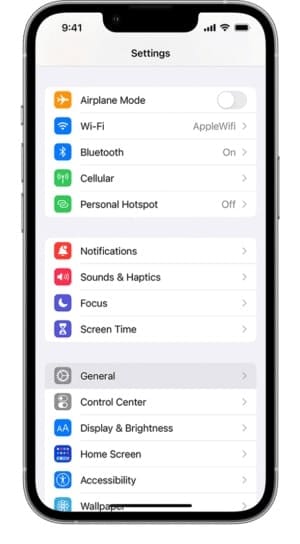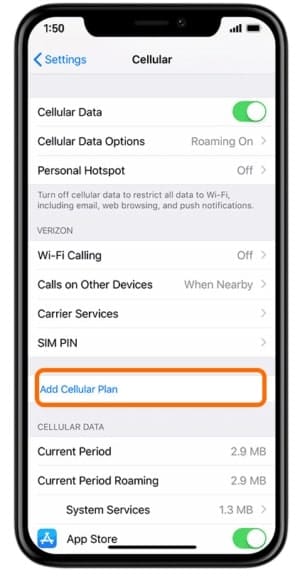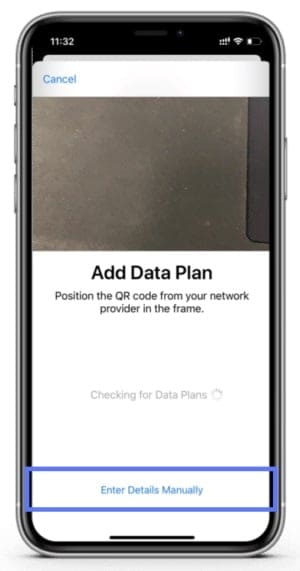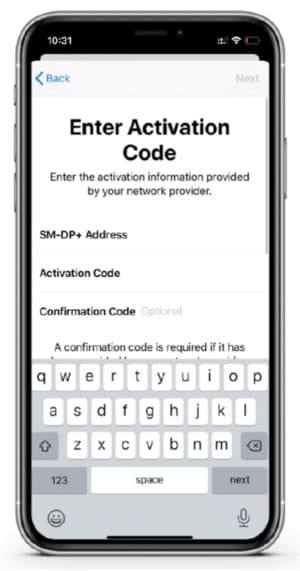Table of Contents
Picture a world where switching mobile networks doesn’t require fumbling with tiny plastic SIM cards. That world already exists—and it’s powered by eSIM technology. Behind the sleek, digital experience of eSIM activation lies a critical but often overlooked component: the SM-DP+ address. This digital address is the linchpin of how your eSIM comes to life after buying an eSIM as it connects to your chosen mobile network.
But what exactly is the SM-DP+ address, and why is it so crucial?
Let’s unpack the mystery behind this technological keystone and explore how it shapes the future of connectivity.
What is an SM-DP+ Address?

An SM-DP+ (Subscription Manager Data Preparation+) address is a server URL used during eSIM activation to securely download a mobile carrier profile to your device. The GSMA (GSM Association) defines SM-DP+ as a system for managing and provisioning eSIM profiles remotely.
When you scan a QR code or use an app to activate an eSIM, your device connects to the SM-DP+ server using this address to retrieve your specific mobile subscription data. It ensures encrypted, secure, and seamless over-the-air provisioning without needing a physical SIM card, enabling modern, flexible mobile connectivity.
The Function of the SM-DP+ in eSIM Activation
Activating an eSIM isn’t just about pressing a button or scanning a QR code. It’s a blend of secure data transfers, encryption, authentication, and profile installation. Here’s where the SM-DP+ steps in.
When you’re setting up an eSIM:
- The device contacts the SM-DP+ server using the provided address.
- Authentication occurs to verify the device and user.
- The server delivers the operator profile (including your phone number, carrier settings, and security credentials).
- The profile is installed and activated on your device.
How Is the SM-DP+ Address Delivered?
There are a few ways a user might receive the SM-DP+ address, depending on the carrier and the device:
- QR Code: Most commonly, when you scan a carrier’s QR code during eSIM activation, it contains the SM-DP+ address and an activation code.
- Manual Entry: Some providers give users the address and activation code to enter manually.
- Carrier App: Some carriers automate this process through their apps.
- Direct Push (for M2M/IoT devices): SM-DP+ addresses can be pre-configured and pushed directly to devices in enterprise or IoT settings.
How to Set Up SM-DP+ Address for eSIM
1. How to set up the SM-DP+ Address on Android
Here are the steps to set up the SM-DP+ Address on Android:
- Choose the SM-DP+ address and the activation code in the email sent from your eSIM provider.
- Click “Settings” on your Android device.
- Select Connections /Network and Internet.

- Select SIM Manager.

- Select Add eSIM.
- Select Scan QR code from the service provider > select Enter activation code.

- You will receive this prompt: “Don’t have a SIM card? Select “Enter Manually.”
- Enter the activation code.
- Select next and add the SM-DP+ Address.
2. How to set up the SM-DP+ Address on iPhone
The following are steps to set up the SM-DP+ address on iPhone (or manually enter the eSIM profile).
- Choose the SM-DP+ address and the activation code in the email sent from your eSIM provider.
- Go to “Settings” on your iPhone.

- Select “Cellular or Mobile Data” > select “Add eSIM / Add Cellular Plan.”

- Select Use QR code.
- Select “Enter Details Manually.”

- Enter the SM-DP+ address and the activation code.

- Follow the on-screen instructions to rename the eSIM with a new label.
- Set the default line for different lines.
Importance of SM-DP+ Address
1. Security
The address directs the eSIM to a trusted server, where encryption protocols ensure that only authorized users can access the correct profile. This keeps hackers and malicious actors at bay.
2. Scalability
Because the address points to a centralized server, carriers can scale eSIM activations without shipping physical SIMs. This is especially valuable for international travel and IoT applications.
3. User Experience
The SM-DP+ address helps ensure a smooth user experience by enabling seamless provisioning. You don’t need to visit a store, swap SIMs, or wait for shipping.
4. Global Connectivity
With eSIM and SM-DP+ infrastructure, a device sold in one country can be instantly connected to another network. It’s borderless connectivity at your fingertips.
What Happens If You Use the Wrong SM-DP+ Address?
If an incorrect SM-DP+ address is entered or scanned, the eSIM cannot retrieve the profile—it’s like dialing the wrong number or going to the wrong website. You may receive errors like “Unable to activate eSIM” or “Invalid SM-DP+ address.” In most cases, users must re-enter the correct address or request a new QR code from their carrier.
Frequently Asked Questions (FAQs) About SM-DP+ and eSIM Activation
Where do I find my SM-DP+ address?
SM-DP+ is usually embedded in the QR code provided by your carrier. Some providers also allow manual address entry via a setup screen.
Can I change my SM-DP+ address manually?
In some cases, yes, you can change your SM-DP+ address, especially if your carrier provides an activation code and address for manual setup. However, most users never need to change it manually.
Is the SM-DP+ address unique for each user?
SM-DP+ is not always unique for every user. Some carriers use a shared SM-DP+ address for all customers, with the activation code identifying your specific profile. Others may assign a unique server for security or business reasons.
How is the SM-DP+ address different from the activation code?
The SM-DP+ address tells your device where to connect, while the activation code tells the server which profile to deliver.
Is SM-DP+ secure?
Yes, SM-DP+ is secure. The communication between your device and the SM-DP+ server is encrypted and follows strict GSMA security standards to ensure data privacy and integrity.
Conclusion
The SM-DP+ address may not get the spotlight, but it’s a behind-the-scenes powerhouse that makes eSIM activation possible. As devices become more connected and physical SIMs fade into the background, the importance of seamless, secure, and scalable provisioning infrastructure will only grow.
Whether you’re traveling internationally, managing a fleet of smart meters, or just setting up a new phone, the SM-DP+ address ensures that the right data gets to the right place—quickly and securely.
Last updated on August 7, 2025

